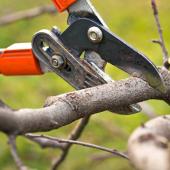A lilac tree sapling, once transplanted, is ailing
-
AuthorPosts
-
July 21, 2022 at 4:33 pm Reply
The sapling, which had established roots in the ground during the winter in a shady place and stands about 16 inches tall, has been transplanted to its permanent sunny location. Even with daily watering, while the plant still stands upright and the leaves remain green, the entire plant is still severely wilted after a week’s time. Any suggestions for reviving this plant; or is it a lost cause? (I live in Zone 5a.) Many thanks.
July 28, 2022 at 2:38 pm ReplyHi – it takes more than a week for a plant to recover after a transplant, in my experience. Especially nowadays, in the summer (I’m supposing you’re in the Northern Hemisphere?).
The wilting is due to the plant having lost many of its smaller roots during the transplant. This happens even in the most careful transplant, since shaking the root ball, lugging it around, etc, create mini-earthquakes that rip the rootlets apart.
These tiny roots actually do the work of pumping in water; larger roots are essentially channels to drive it up. And as the leaf mass probably stayed identical, unless you pruned it, this means the following:
- on one hand, less active small roots
- on the other hand, just as many leaves to feed + more sun due to the new location.
So this explains that the wilting is perfectly normal and understandable.
It takes several weeks for rootlets to form – after all, simply when taking a cutting and setting it to root, it also takes a month at least for most plants. So your lilac should start recovering in about two-three more weeks, that’s the target.
In the meantime, I’d remove about half the leafage, or one-third only if you feel that half is too much. You can either remove every other frond, or cut all the fronds by half, it’s the same result regarding survivability.
If you’d rather not remove any leaves at all, then perhaps try hanging a shade veil for the two or three hottest hours of the day: this will reduce the burden on the fledging roots.
From my point of view, it’s absolutely not a lost cause, lilac is a very resilient plant and you’re definitely taking good care of it.
If ever you’d have to do it again, I’d suggest timing the transplanting to end of fall. The plant will have transferred nutrients to the larger roots from yellowing leaves before they dropped. And it has all winter to work underground and regrow those rootlets to be ready for spring and summer!
Nature & Garden moderator.
Message me if you have any questions, I’ll be glad to help out!
“Winter reveals the strength inside… of those who dare go out!”
-
AuthorPosts
- You must log in to post and answer topics. Sign up / Sign in


